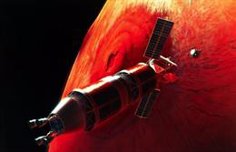Sep. 1 () –
The experiment MOXIE, from the Massachusetts Institute of Technology (MIT), in the United States, has managed to produce oxygen in the atmosphere of Marte, in what constitutes the first demonstration of the use of in situ resources on the Red Planet and a key step in the goal of sending humans to a Martian mission, the researchers announce in the journal ‘Science Advances’.
The Mars Oxygen In-Situ Resource Utilization Experiment (MOXIE) has been successfully manufacturing oxygen at from the carbon dioxide-rich atmosphere of the Red Planet since February 2021when it landed on the Martian surface as part of NASA’s roverance mission.
The researchers report that, as of late 2021, MOXIE was able to produce oxygen in seven experimental runs, in a variety of atmospheric conditions, including day and night, and across different Martian seasons. In each of the tests, the instrument met its goal of producing six grams of oxygen per hour, about the rate of a modest tree on Earth.
The researchers envision that an enlarged version of MOXIE could be sent to Mars before a human mission, to continuously produce oxygen at the rate of several hundred trees. With that capacity, the system would generate enough oxygen to support humans once they arrive and to fuel a rocket that returns astronauts to Earth.
For now, the continued production of MOXIE is a promising first step towards that goal. “We have learned a lot that will serve as the basis for future larger-scale systemssays Michael Hecht, principal investigator for the MOXIE mission at MIT’s Haystack Observatory.
MOXIE’s production of oxygen on Mars also represents the first demonstration of “in situ resource utilization,” which is the idea of harvesting and using a planet’s materials (in this case, carbon dioxide on Mars) to make resources (such as oxygen) that would otherwise have to be transported from Earth.
“This is the first demonstration of actually using resources on the surface of another planetary body and chemically transforming them into something that would be useful for a human mission. said MOXIE Associate Principal Investigator Jeffrey Hoffman, professor of MOXIE in MIT’s Department of Aeronautics and Astronautics. It’s historic in that sense.”
Hoffman and Hecht’s coauthors at MIT include MOXIE team members Jason SooHoo, Andrew Liu, Eric Hinterman, Maya Nasr, Shravan Hariharan, and Kyle Horn, along with collaborators from multiple institutions, including the Jet Propulsion Laboratory. NASA, which managed the development, flight software, packaging, and testing of MOXIE prior to launch.
The current version of MOXIE is small by design, to fit aboard the rover, and is built to run for short periods, starting up and shutting down with each run, depending on the rover’s exploration schedule and mission responsibilities, but a large-scale oxygen factory would include larger units that would ideally run continuously.
Despite the necessary compromises in the current MOXIE design, the instrument has shown that it can reliably and efficiently convert Mars’ atmosphere to pure oxygen. To do this, it first sucks in the Martian air through a filter that cleans it of contaminants. The air is pressurized and sent through the Solid Oxide Electrolyzer (SOXE), an instrument developed and built by OxEon Energy.which electrochemically splits carbon dioxide-rich air into oxygen and carbon monoxide ions.
The oxygen ions are then isolated and recombined to form breathable molecular oxygen, or O2, the quantity and purity of which is measured in the MOXIE before it is safely returned to the air, along with carbon monoxide and other atmospheric gases.
Since the rover’s landing in February 2021, MOXIE engineers have powered up the instrument seven times throughout the Martian year, each time taking a few hours to warm up and then another hour to make oxygen before shutting down again. Each run was scheduled for a different time of day or night, and in different seasons, to see if MOXIE could adapt to changes in the planet’s atmospheric conditions.
“The atmosphere of Mars is much more variable than that of Earth,” explains Hoffman. Air density can vary by a factor of two throughout the year, and temperature can vary by 100 degrees. One of the objectives is to show that we can work in all seasons“.
So far, MOXIE has shown that it can make oxygen at almost any time of the Martian day and year. “The only thing we haven’t shown is that it works at dawn or dusk, when the temperature changes substantially. Hecht specifies. We have an ace up our sleeve that will allow us to do that, and once we test it in the lab, we will be able to hit that last milestone to show that we really can race at any time.”
As MOXIE continues to produce oxygen on Mars, engineers plan to expand its capacity and increase production, especially in the Martian spring, when atmospheric density and carbon dioxide levels are high.
“Next time it will be during the highest density of the year, and we want to produce as much oxygen as we can,” Hecht says. “So we’ll put it as high as we dare and let it run as long as we can.”
They will also monitor the system for signs of wear. Because MOXIE is just one experiment among several aboard the rover, it cannot function continuously as a full-scale system would. Instead, the instrument must be turned on and off with each run, a thermal stress that can degrade the system over time.
If MOXIE can function successfully despite being repeatedly turned on and off, this would suggest that a full-scale system, designed to run continuously, could do so for thousands of hours.







![[Img #74664]](https://thelatestnews.world/wp-content/uploads/2024/12/James-Watson-The-controversial-genius-behind-the-double-helix-150x150.jpg)






![[Img #74664]](https://thelatestnews.world/wp-content/uploads/2024/12/James-Watson-The-controversial-genius-behind-the-double-helix-300x200.jpg)

Add Comment